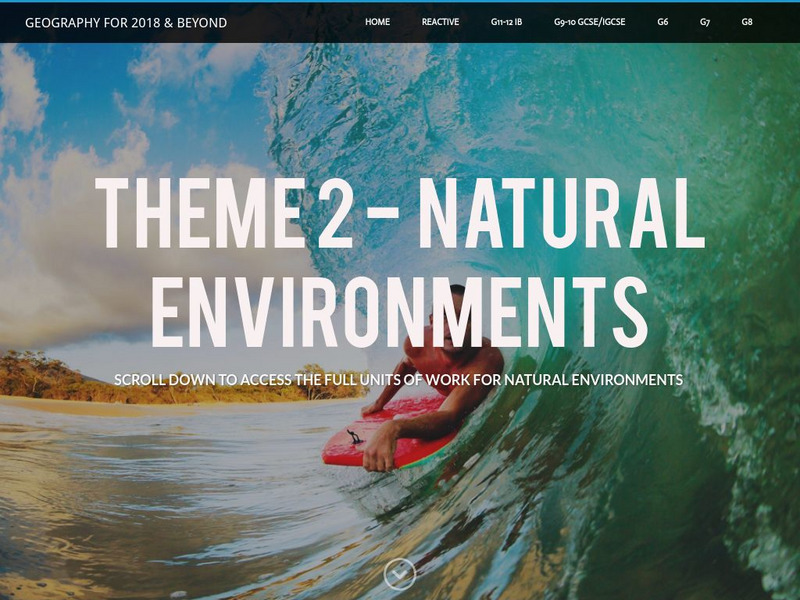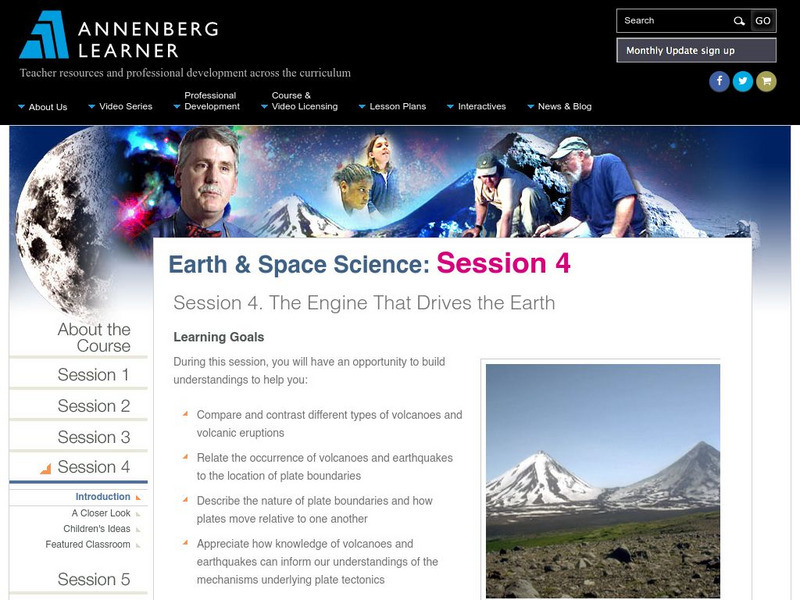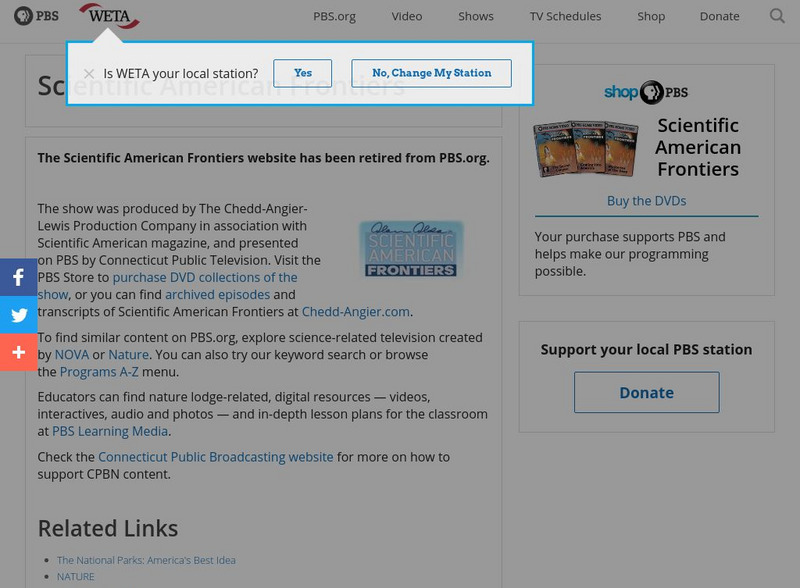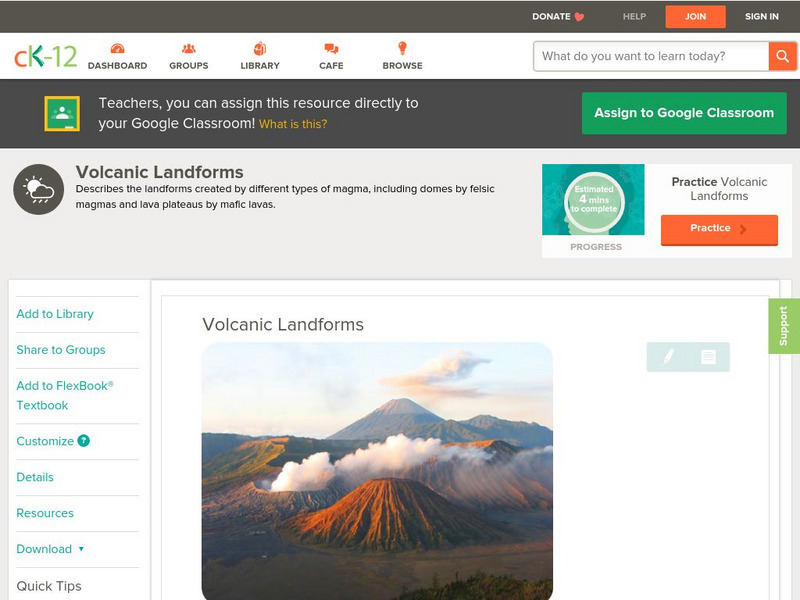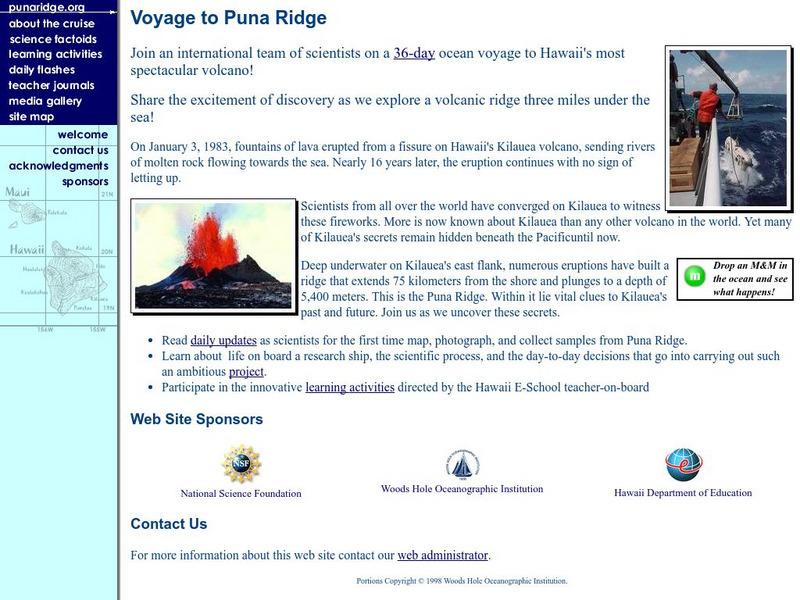Hi, what do you want to do?
University of Victoria (Canada)
University of Victoria: Composite Volcanoes
This resource provides information about composite volcanoes.
Ducksters
Ducksters: Earth Science for Kids: Volcanoes
Kids learn about the science of volcanoes including how they form mountains, lava, and magma; types such as cinder cone, composite, and shield; watch a video about volcanoes.
Geographypods
Geographypods: Theme 2: Natural Environments
A rich collection of highly engaging learning modules on topics related to the natural environment. Covers four main areas - plate tectonics, forms and processes, weather and climate, and rainforest and desert. Within each of these,...
University of Hawai'i
University of Hawaii: Hawaii Center for Volcanology
This is the home page for the Hawaii Center for Volcanology. Look through this site and virtually visit the different volcanoes in Hawaii. Also provides a description of the formation of the Hawaiian Islands from volcanic activity.
US Geological Survey
U.s. Geological Survey: Quick Reference for Volcano Types
Succinct descriptions of the different kinds of volcanoes, with additional links for each.
Curated OER
Image Map of Types of Volcano Hazards, With Links to Detailed Descriptions
Clearly labeled diagram of a volcanic eruption, with a focus on the hazardous effects of landslides, pyroclastic flows, lava flows, eruption clouds, acid rain, tephra, and lahars.
PBS
Nova: Seismic Signals
Scientists have determined that the earthquakes preceding volcanic eruptions are different than those that precede earthquakes. Discover the sounds and wave patterns produced by the three different types of volcanic seismic activities.
NASA
Nasa Earth Observatory: Putting Earthquakes in Their Place
Discover the location of faults by viewing a schematic Global Tectonic Activity Map. View the location of different types of faults, active spreading centers and volcanoes
Annenberg Foundation
Annenberg Learner: Earth and Space Science: The Engine That Drives the Earth
Material to begin an exploration of volcanoes, earthquakes, and plate tectonics. An hour-long video is accompanied by learning goals, an outline and overview, details on volcano types, plate boundaries, and "hot spots," and ideas for...
Climate Literacy
Clean: Mt. Pinatubo and the Atmosphere
This lesson explores the impact of volcanic eruptions on the atmosphere. Students will analyze three types of visual information: a graph of aerosol optical depth v. global temperature, a global map with temperature anomalies, and an ash...
Math Science Nucleus
I. Science Ma Te: Integrating Science, Math and Technology
This site offers a wealth of online textbook-related materials that encourage the discovery of science in the world around us. Enter the site to access material on specific topics. Each section contains reading material (complete with...
San Diego State University
San Diego State University: How Volcanoes Work: Eruption Types
Learn about the different ways that volcanoes erupt. These eruptions are closely related to the kind of volcanic activity that is occurring. Includes a quiz at the end.
The Field Museum
Field Museum: Exhibits: Nature Unleashed: Inside Natural Disasters
Discover the true powers of Mother Nature through this vivid collection of research which delves into the causes of natural disasters and the impacts on those affected.
ClassFlow
Class Flow: Volcanoes
[Free Registration/Login Required] This flipchart discusses the parts of a volcano and where some are located.
Science Education Resource Center at Carleton College
Serc: Igneous Rocks Model
Students use samples of four different types of igneous rocks to observe differences in texture, color, and grain size, and then make inferences about the relative cooling histories and silica content associated with each magma type.
Woods Hole Oceanographic Institution
Woods Hole Oceanography Institute: Hot Topics: Lava Flows
How long does it take a volcano to grow? What are the different types of lava? What's a lava tube? All of these questions are addressed by this resource.
Oregon State University
Volcano World: Submarine Volcanoes
Did you know the most productive volcanic systems on Earth are beneath the ocean? This reference page will explore the features and properties of these submarine volcanoes.
Oregon State University
Volcano World: Eruption Styles
Study the different eruption styles with this reference page that discusses the characteristics of the eruption styles.
PBS
Pbs Teachers: Scientific American: Science in Paradise: Paradise Postponed
Research the eruption of the Soufriere Hills volcano that devastated the island of Montserrat, and create a mini volcano using the chemical reaction caused by mixing baking soda and vinegar.
Other
Geocraft: When Ocean Floor and Continents Collide
Educational site provides users with some understanding of how a volcano forms through the process of subduction.
CK-12 Foundation
Ck 12: Earth Science: Volcanic Landforms
[Free Registration/Login may be required to access all resource tools.] Lava and magma create many types of landforms.
CK-12 Foundation
Ck 12: Earth Science: Volcanic Landforms
[Free Registration/Login may be required to access all resource tools.] Lava and magma create many types of landforms.
Other
West Virginia Geological and Economic Survey: Mountains
Site for general information about mountains. There is a downloadable PDF of this article with pictures.
Other
Puna Ridge: Voyage to Puna Ridge
On January 3, 1983, fountains of lava erupted from a fissure on Hawaii's Kilauea volcano, sending rivers of molten rock flowing towards the sea. Nearly 16 years later, the eruption continues with no sign of letting up. This site provides...







